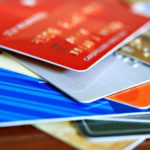When driving long distances there are many safety factors that motorists must pay attention to in order to stay safe on the road. These are fatigue, boredom, hunger, road conditions, breaks and the condition of the vehicle itself. Here are some suggestions for motorists to employ when embarking on a long distance trip in their automobile.
The motorist should make sure to prepare themselves the night before both mentally and physically. Be mentally prepared by making sure to know the route to be taken, have a positive attitude and physically be sure to get a good night’s sleep the night before in order to be well rested and able to perform the task of driving on the day of the trip.
The automobile itself should have a major check of all fluids and tire pressure. When driving in snowy conditions, be sure to have snow tires installed before embarking on a long trip.
The motorist should be sure to know exactly where they are going and have the trip mapped out. Do not rely solely on a global positioning system (GPS) because in the nature of ever-changing roads and loss of satellite signals, GPS can become an unreliable source for directions. Be sure to have a road map in the glove box to refer to if needed along the way of the trip. Make sure to pack a flashlight, working cell phone and nutritious snacks in the automobile. Before leaving, a savvy traveler is sure to tell a friend or family member where they are going, what route they are taking, when they are leaving and when they play to return. This way, if some unforeseen tragedy does happen, someone will be able to locate them if needed.
Drivers should realize that to make a long distance trip they need to stay alert and not drive impaired. This means no alcohol or drugs. It has been proven that driving for 20 straight hours can impair an individual as much as having a blood alcohol level of .10, which is well over the legal limit in all of North America. One way to combat this problem of becoming impaired due to fatigue is to take lots of breaks. One suggestion is to break the trip up in to manageable chunks of time. Drive for 3 hours, then pull over and take a 10 to 15 minute break. This may seem that it will take much longer to reach a destination, but in the long run it will make the trip seem shorter and much safer as well.
Individuals can also stay alert by listening to the radio or engaging in conversation with a companion if they have a traveling partner. This will help keep the mind stimulated and help to ward off fatigue on a long distance trip.










